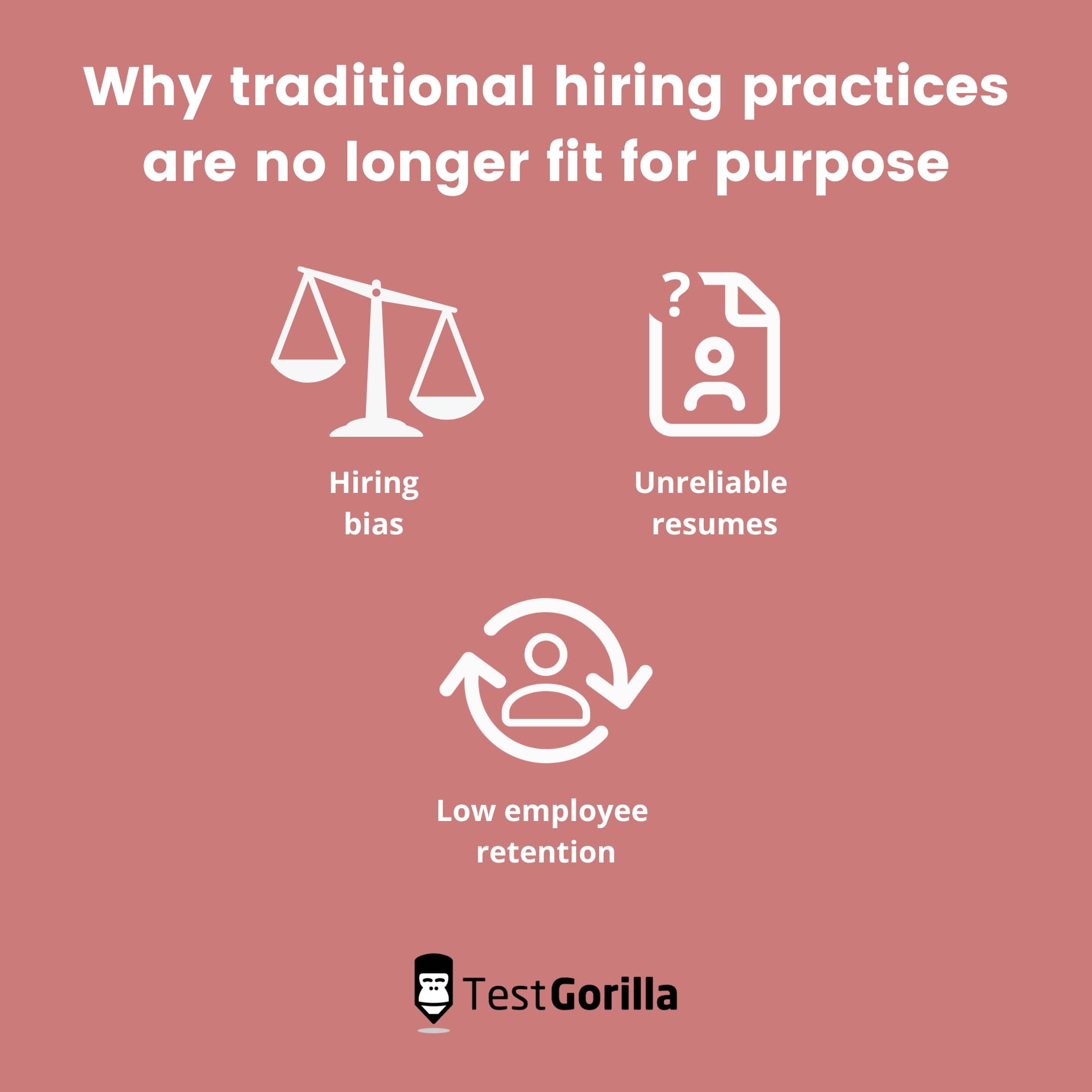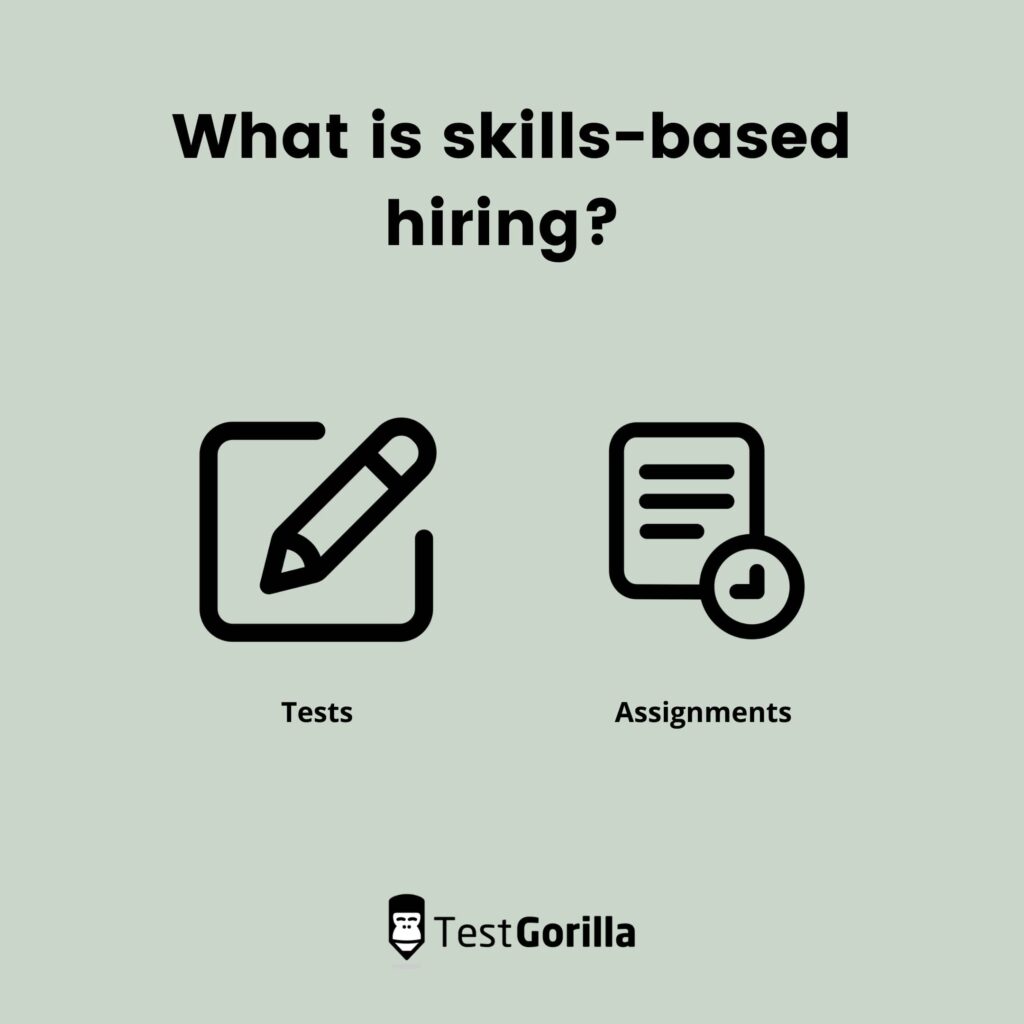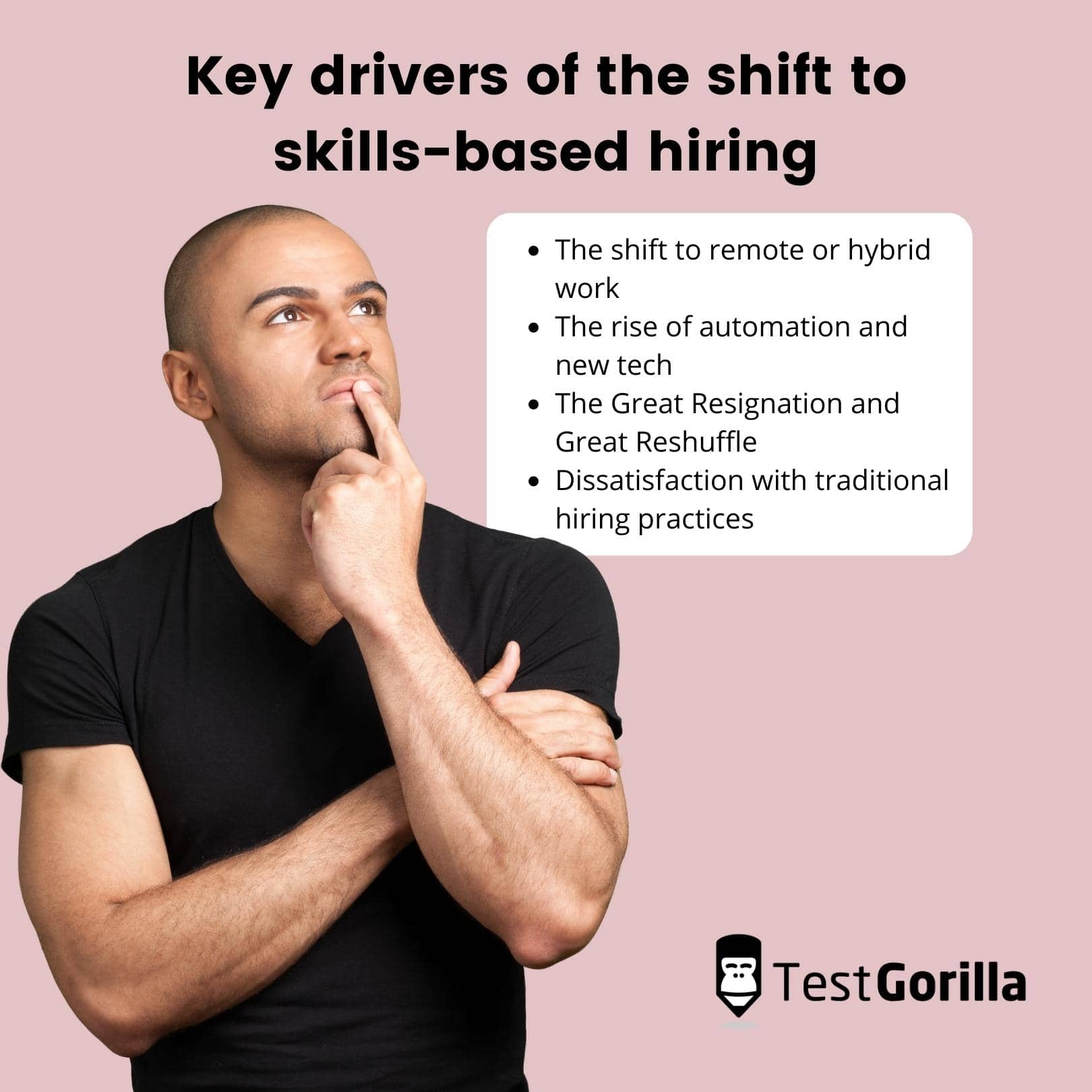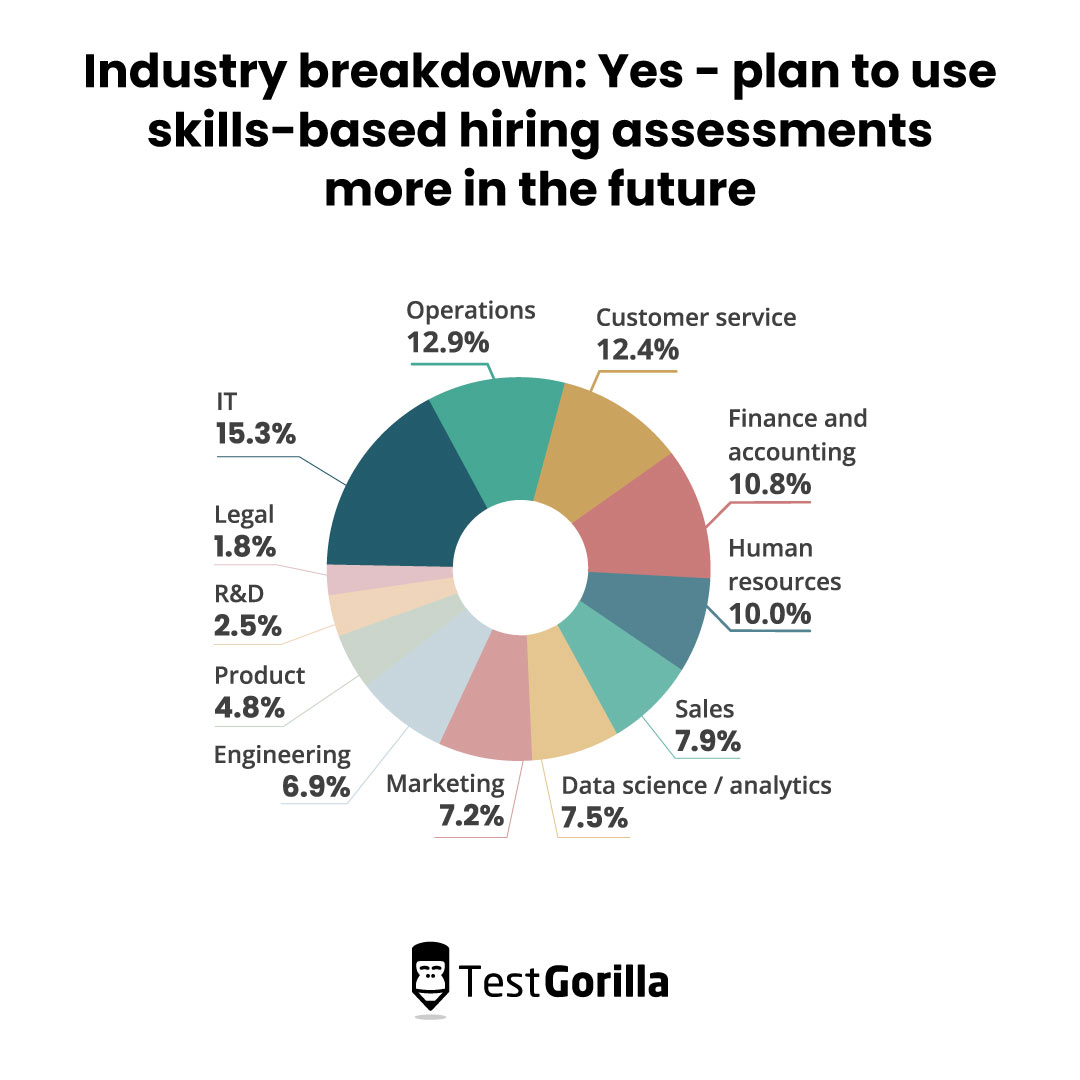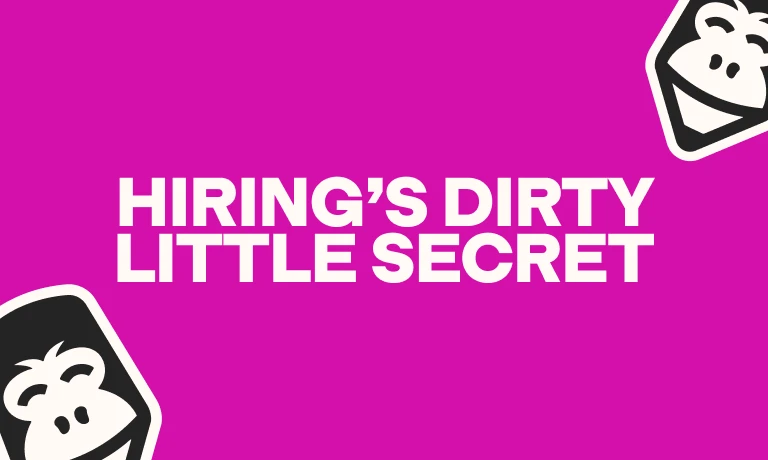The rise of skills-based hiring: Past history and current trends
So you’re an HR manager looking to hire a new programmer for your team. You’ve narrowed hundreds of applicants down to the 10 with the most impressive resumes and set up interviews. But then, during a simple on-call test, you realize half of them don’t know the basics of the skills they’re supposedly proficient in.
You end the call disappointed, and you’re back to square one.
In the face of increasing automation and digitalization, a gathering global recession, and the war for talent, you can’t afford costly, time-consuming hiring errors like this – not to mention costly mis-hires.
Fortunately, there’s another way: skills-based hiring.
With this method, CVs are no longer a requirement for many industries and roles. Employers can now prescreen candidates using online skills assessments. This enables them to select individuals based on their actual skills rather than subjective, unreliable factors, such as their work history or qualifications.
To put this emerging hiring method into context, we’ll walk you through the history and development of skills-based hiring, along with its main drivers and trends.
Why traditional hiring practices are no longer fit for purpose
Traditional hiring practices and over-reliance on resumes create an unreliable, subjective, and biased hiring experience. Additionally, you can’t necessarily predict a person’s job success based on their CV or cover letter.
With a war for talent raging, you can’t afford to limit your talent pool through resume-based recruitment and other outdated practices. However, measuring skills rather than education or experience improves your chances of hiring a more diverse group of professionals who are a better fit for their roles.
This ultimately impacts employee and company performance, retention rates, organizational efficiency, and your bottom line.
💡 Did you know? The very first CV was written by Leonardo DaVinci in 1482 – so this hiring tool is quite dated! To learn more, read our guide on the history of the CV.
Hiring bias
Hiring managers unconsciously tend to favor candidates with similar or familiar backgrounds, education, and work experience. This means they can fail to properly judge a candidate’s potential and skills. These biases then prevent the most promising applicants from being placed in roles most suited to their strengths.
One of the more striking pieces of evidence for this is the story of Erin McKelvey, a female executive who, after replacing her first name with the nickname “Mack” on her resume, achieved a 70% response rate.
“Erin McKelvey’s” resume, on the other hand, got zero. This came after Erin learned that a female friend obtained better responses from prospective employers after shortening her name from Alexandra to Alex.
Interested in reading more about inherent biases in the workplace? Check out this landmark study by Marianne Bertrand and Sendhil Mullainathan – “Are Emily and Greg More Employable than Lakisha and Jamal? A Field Experiment on Labor Market Discrimination.”
Unreliable resumes
Confident candidates tend to oversell themselves by embellishing their resumes, inflating their achievements, and even being disingenuous about certain skills. Meanwhile, less confident applicants may undersell their abilities, disqualifying themselves from the hiring process before they’re given a fair chance.
In fact, more than one-third of Americans admit to lying on their resumes. That means more than 10 out of 30 of your applicants may have unreliable CVs. Without testing their skills, how can you ensure they actually have the necessary competencies for the role?
We give all our candidates content writing assignments based on stringent guidelines. We only started [doing that] when we saw many candidates embellish their experiences on their resumes. Once work actually started, and they had to back up their experience, they couldn’t perform.
Annie Morris, the editor in chief at Made in CA[1]
Additionally, many businesses use an applicant tracking system to scan resumes based on specific keywords. However, candidates who know how to “stuff keywords” can easily pass your screening. On the other hand, more qualified applicants who didn’t take that route won’t.
Low employee retention
Our 2022 State of Skills-Based Hiring report shows that employees are happier when placed in jobs that match their skills and abilities. Around 72% of team members who were recruited via skills-based hiring were happy or very happy in their current roles versus 62.9% of respondents who were not recruited via skills-based hiring.
Suppose you’re confident that there’s a good match between the role’s required skills and an applicant’s abilities, which have been proven using objective, scientifically backed tests. In this case, it’s far more likely that the candidate will succeed – and stay – in their new role.
Let’s take a look at an alternative to resume-based recruitment: skills-based hiring.
What is skills-based hiring?
Skills-based hiring is a recruitment method that involves hiring candidates based on quantifiable skills instead of relying on bias-prone methods like resume screening. Hiring managers and recruiters use scientifically backed tests or assignments to verify the applicant’s skills early on in the hiring process.
This approach creates a fairer, more objective recruitment experience for candidates. It also helps you find top professionals who are most likely to succeed at their jobs and stay with the company longer. Additionally, it reduces the time you spend sifting through inaccurate resumes. Instead, you can focus on qualified applicants, reducing the total time- and cost-to-hire.
Skills-based hiring isn’t about previous work experience, university degrees, or who you know. This method levels the playing field for candidates and eliminates the need for outdated resumes and cover letters.
Let’s take a closer look at the two main types of skills-based hiring.
1. Tests
Role-specific tests are the most popular method of skills-based hiring, according to our State of Skills-Based Hiring report. For example:
Hard-skills tests focus on proficiencies like coding, programming, foreign languages, accounting, or industry-specific software
Soft-skills tests measure abilities like leadership and people management, communication, teamwork, culture add, or problem-solving
Multi-measure assessments, a combination of different tests, are the best predictors of job success. That’s because you can mix different types of evaluations to measure a candidate’s cognitive abilities, personality traits, and values.
2. Assignments
Assignments are the second-most popular type of skills-based hiring, used by 43.9% of our survey respondents. These involve giving applicants take-home assignments or asking them to submit a mock work sample. They could be mini case studies or projects that let candidates tackle the types of challenges they’re likely to face in the role.
However, lengthy take-home assignments place some applicants at a disadvantage. For example, a single parent working a full-time job and caring for an elderly parent won’t be able to dedicate the same time and effort to the assignment as their single, unemployed counterpart.
That’s why shorter, ten-to-thirty minute tests are generally better for giving all candidates the same opportunity to prove their skills.
The best insights on HR and recruitment, delivered to your inbox.
Biweekly updates. No spam. Unsubscribe any time.
How assessing skills is becoming more important than resumes
Skills-based hiring’s popularity has grown rapidly since 2019 and is set to continue to do so. In fact, 38% of our survey respondents said they plan to increase their budget on skills-based hiring in the future.
Let’s take a look at how this method became popular in the first place, along with some of its key drivers and trends.
The history of skills-based hiring
Before the rise of skills-based hiring, CVs were the only indicator of an applicant’s competencies, education, and work history. The history of this document goes back to 1482 when Leonardo da Vinci supposedly wrote the first CV as we know it.
Fast-forward to the 1950s, when CVs were formalized and required as part of the job application process. Employers could request your age, weight, parents’ background, marital status, religion, and a “professional” picture of you wearing formal workwear.
These documents started to be more formally challenged in the mid-2010s because of their discriminatory potential.
In 2015, former McKinsey partner Byron Auguste founded Opportunity@Work to connect employers to workers he defined as STARs – people Skilled Through Alternative Routes.[2] The organization’s motto is “If you can do the job, you should get the job.”
Between 2017 and 2019, employers reduced degree requirements for 45% of middle-skill positions and 31% of high-skill positions in response to a tight employment market. Some of the most affected jobs were those in IT and managerial occupations.
The COVID-19 pandemic further accelerated the shift to skills-based hiring practices.
Desperate to find qualified workers, many businesses started to rethink their priorities and, at least temporarily, forgo degree requirements. Especially with more teams moving to a remote or hybrid working model, employers needed individuals who were up to date with the latest technologies. And for them, those competencies mattered more than a degree.
This trend wasn’t just happening in the private sector. The US federal government also signaled a move to a skills-first approach, and numerous state governments followed.
Key drivers of the shift to skills-based hiring
There are many factors that drive the shift toward skills-based hiring. Here are the ones we find among the most influential.
The shift to remote or hybrid work
The nature of work is changing fast, as are employee expectations. Our report found that today, 18% of employees work remotely full-time and many more follow a hybrid model.
With the current trend for remote hiring and working, skills-based hiring is accelerating in value since it helps hiring managers find and assess talented individuals who aren’t necessarily geographically close to them.
Additionally, with the larger talent pool that inevitably comes with remote hiring, evaluating applicants using assessments and tests saves you from needing to sift through a large volume of resumes.
Especially when hiring remotely, we’ve put a greater emphasis [on assessing] skills in a variety of roles, particularly software engineering, product management, product design, and marketing. In a remote environment, [this] helps us understand and evaluate a candidate’s potential more quickly [and] eliminate many biases or outright favoritism because the [candidate’s] quality of work speaks for itself.
David Ciccarelli, the chief executive officer of Voices[3]
The rise of automation and new tech
Skills-based hiring embraces and relies on the power of modern technology and automation, such as machine learning and AI. That’s because its cutting-edge software and technical abilities let you implement this recruitment practice most effectively.
By rejecting the centuries-old resume in favor of the most up-to-date tech, organizations that adopt skills-based hiring can recruit better employees faster and for a lower cost. They can also improve their results by quickly identifying the most suitable candidates from a larger, more diverse talent pool, regardless of the company’s location or industry.
The Great Resignation and Great Reshuffle
In early 2021, with the pandemic at its peak, workers frustrated with health risks, public mandates, confusing work-from-home policies, and reduced work hours started to quit their jobs en masse. This Great Resignation was also influenced by the mass realization that mental health matters more than staying at an unsatisfying job.
However, most of these individuals weren’t leaving the workforce altogether. Instead, they were looking to find roles that provided a more inspirational company culture, better work-life balance, and chance for better pay and career growth.
Skills-based hiring and pre-employment testing made it easier for workers, especially women and BIPOC, to make this transition. This is because these assessments enabled employers to identify candidates’ transferable skills and tap into their potential regardless of background or experience.
Dissatisfaction with traditional hiring practices
Resume-based hiring methods create significant barriers to entry for fresh graduates who have yet to gain experience in their chosen field. According to our findings, 31% of those under 25 who had changed jobs in the past 12 months strongly felt that they had been filtered out owing to these issues.
Gen Z workers, in particular, are more than willing to walk away from an opportunity that doesn’t align with their values and recruiters who fail to assess them objectively. But skills-based hiring gives these workers a chance to prove themselves to their employers in a more equitable, unbiased way.
Skills-based hiring today
The trend toward more equitable and unbiased hiring practices shows no signs of slowing any time soon: 87.5% of our report respondents said they’re going to make the same or more use of skills-based hiring in the future as they do now, and 43.9% have stated that they will use more.
Of the employers who state that they will use skills-based hiring more often in the future, the largest segment is focused, unsurprisingly, on recruiting for IT-specific roles.
Telecommunications, marketing, and broadcasting and publishing companies are the top users of skills-based hiring. The lowest percentage is found in the hotel and food services sector, at 62.2%.
Our data shows that the IT, operations, and customer service industries are the biggest adopters of skills-based hiring
For example, Steelcase, a global office furniture brand, successfully switched over to early skills identification and skills-based hiring to increase the diversity of its workforce. As a result of this and other initiatives, the organization increased female hires by 2% and racial or ethnic minorities by 30%.
Revolut, a global leader in the financial services industry, used skills-based hiring to improve time-to-hire by 40%.
According to Julia Panchenko, the service’s recruitment manager, their biggest challenge was building high-functioning multilingual teams. The major obstacle was dealing with all the “extra manual working [from] performing checks in written form and verbal checks afterwards.” After switching hiring methods, they achieved results such as:
A faster hiring process
More objective candidate screening
A better candidate experience
Improved hiring efficiency
A higher overall quality of candidates invited to interview
When it comes down to it, skills-based hiring is one of the most effective ways for businesses today to find high-quality candidates quickly without compromising on quality or wasting time on those who may not be suited for their particular roles or organizational objectives.
Jamie Irwin, the director and search marketing expert at Straight Up Search[4]
Skills-based hiring: a fairer way to build future-proof teams
Traditional recruitment practices and over-reliance on resumes create a subjective, inequitable, and harmful hiring process. The world of work is changing fast, as are candidates’ expectations. And the only way to win the war for global talent is to discard outdated practices that aren’t fit for purpose.
The first CV was written in 1482 by Leonardo da Vinci. Almost 470 years later, in the 1950s, CVs had become a formalized part of the recruitment process.
However, the centuries-old document started to become more formally challenged in the mid-2010s in favor of more equitable, skills-based hiring practices. The COVID-19 pandemic then further accelerated this shift, and the trend is going strong with no signs of stopping.
Now, forward-thinking organizations need to go beyond biased recruitment practices like resumes and switch to skills-based hiring methods to attract, hire, retain, and build better, more diverse teams.
To hire applicants based on quantifiable skills, you can take advantage of:
Scientifically backed tests that simplify assessing individuals on predetermined soft and hard skills
Take-home assignments that let candidates tackle real-life problems they’re likely to face at work
By saying goodbye to resumes, your business can stay flexible, attract the best talent, and remain competitive in a changing world. And that makes for a more successful, happier workforce and a more efficient, profitable company.
Want to reduce employee turnover and costly mis-hires? Find out how skills-based hiring can help you build more diverse, happier, and productive teams. Download the report to learn more.
Thanks to Eva de Mol, a co-founder of Capital T, for additional insights and inspiration.[5]
Sources
“Made in CA – Canadians, spend your money wisely.”. Made in CA. Retrieved January 12, 2023. https://madeinca.ca/
“STARs – Opportunity@Work”. Opportunity@Work. Retrieved January 12, 2023. https://opportunityatwork.org/stars/
“#1 Marketplace for Voice Over”. Voices. Retrieved January 12, 2023. https://www.voices.com/
“Straight Up Search | Boutique Full Service SEO Agency”. Straight Up Search. Retrieved January 12, 2023. https://straightupsearch.com/
“CapitalT”. CapitalT. Retrieved January 12, 2023. https://www.capitaltvc.com/
You've scrolled this far
Why not try TestGorilla for free, and see what happens when you put skills first.


